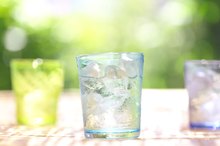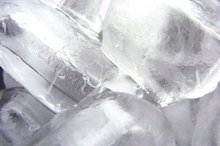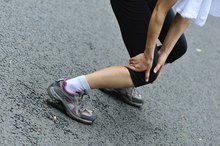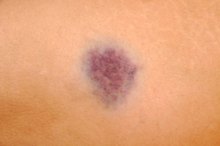Is Eating Ice Healthy?
While ice dishes, namely shaved ice, are common around the world, from Asia to Central America, a craving for ice or regularly eating ice cubes may be a sign of a greater health complication. If you have a craving for ice, or continuously eat ice along with other “nonfood” items, you may be suffering from pica or an iron deficiency. If you are concerned about your eating habits, it is best to speak with a medical professional rather than to self-diagnose.
Pica Symptoms
While pica is most common in people with other developmental disorders, it can also occur frequently in young children and, in some cases adults. The most common symptom of pica is a craving for nonfood items, such as paint, dirt, clay, chalk, laundry soap, sand and ice. Pica is considered a serious health concern, and it can lead to lead poisoning and low iron levels. In some cases, however, iron deficiency, also known as anemia, may cause a craving for ice.
Low Iron Levels
Why Do People Eat Ice?
Learn More
A 2010 issue of the “Journal of Medical Case Reports” included a case study on the relationship between low iron levels and ice eating. Researchers found that the symptoms of pica, including a craving for ice, were greatly reduced or stopped when iron levels were raised to healthier levels. Eating ice will not reduce the symptoms of iron-deficiency anemia, in which your body does not have enough red blood cells, but including a diet rich in iron will help. The recommended dietary allowance of iron is 8 to 18 milligrams per day.
Added Sugar in Shaved Ice
If what you are craving is shaved ice, a dessert common in Asian and Latin American cultures but widely available in the United States, you likely are not suffering from iron-deficiency anemia. While shaved ice is safe to eat -- and refreshing -- eating too much or too often can be bad for your health as it is high in added sugars. Shaved ice is flavored with syrups containing refined sugars, which, according to the American Heart Association, contribute to weight gain and the obesity epidemic. Limit the amount of added sugar you eat each day -- including syrups in shaved ice -- to 6 to 9 teaspoons a day to stay healthy. In addition, chewing on the ice, especially larger pieces, can lead to gum and teeth damage. So if you have sensitive teeth, chewing ice, rather than sucking on it, can lead to more pain. If you regularly chew ice because you like chewing, consider sugar-free chewing gum instead.
Ice Cubes and Dehydration
The Nutrition of Italian Ice
Learn More
If you are not suffering from iron-deficiency anemia or pica, eating ice, because you enjoy the coolness and the crunchy texture, is not a cause for alarm. Ice can help you rehydrate, especially if you are mildly dehydrated, as sucking on ice cubes can help lower your body temperature as well as provided needed moisture to your lips and mouth before consuming larger quantities of fluids. Symptoms of mild dehydration include thirst, a dry mouth, less urination and darker-colored urine. Drinking water and sucking ice can help relieve the symptoms of mild dehydration, but if you have severe dehydration, you need to seek emergency medical care.
Related Articles
References
Writer Bio
Lana Billings-Smith has been writing professionally since 1997. She has been published in the "Montreal Gazette" and the "National Post." She also teaches and lectures at McGill University. A certified personal trainer, she holds a Bachelor of Arts with a specialization in leisure sciences and a minor in therapeutic recreation.









